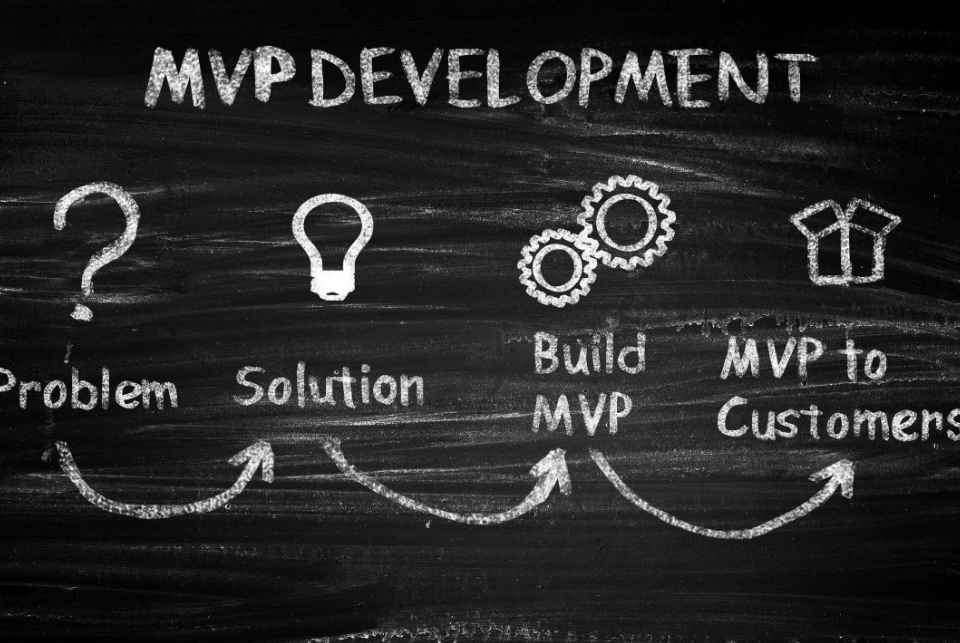The fundamentals of starting an EdTech company in 2023 include the mindset and strategy required, the sources of funding, and the company’s goals. We hope that this guide about ‘How to launch an edtech startup?’ is a wealth of information for you and it will answer many of your questions.

According to HolonIQ, the edtech industry is one of the most developing industries right now. So if you are planning to launch an edtech startup, you must start your research now.
When it comes to launching an edtech startup, it’s important to consider what measures to take before establishing an edtech company to ensure that your business is well-prepared to deal with the inevitable challenges.
Let’s check out the right ways or steps to launch an edtech startup.
Steps To Launch A Successful Edtech Startup
So, here your query of how to launch an edtech startup ends. Just go through the steps below, analyze them deeply and start leveraging your edtech startup strategy today.
1. Identify Your Ideal Market
“As of 2021, the edtech market was worth $84.61 billion. By 2026, that number is expected to rise to $24158 billion.”
Do your research and spend some time on the ground before launching your EdTech startup. The first step is researching your potential customers, the market, and the competition. Consider these four guidelines as you try to define your ideal market or customer:
a) Market Research
First of all, deep dive into the market and do your groundwork. This is a very important part of the successful launching of your edtech startup.
If you find your target market, potential customers, their pain points and the products or services they’re already utilizing, you can better meet their demands. Besides, you can conduct surveys and interviews with teachers online to learn about their issues or challenges.
b) Identify and Validate your Niche
Identifying and validating your niche requires first developing an intimate familiarity with your target demographic’s wants and desires.
Whoever falls within this category will most likely appreciate what you offer. Factors like age group, geographic location, and kind of educational organization should all be considered when determining a target audience.
c) Figure Out the Best Marketing Strategy or Approach
The next step is to design a marketing plan once you have settled on your niche and target audience. This phase is essential to identify your target market and craft a compelling pitch.
You may promote your business through various methods, including digital marketing, google ads, social media marketing, Email marketing, and content marketing.
Helpful: Pros and cons of various edtech business models
d) Attempt to Achieve Attainable Objectives
After this comes the responsibility of setting goals. It is generally seen that businessmen set big goals to make quick progress and cannot achieve them in the end. This is what you have to avoid.
Always be realistic and set goals that you can achieve. You should make long-term and short-term goals. In the short term goals, you can launch the beta version of your product and get people signed up, and in the long term, you can sell the main or full version of the product by directly targeting the same users.
2. Competitive Research and Industrial Analysis

“According to Forbes, 57% of companies state that gaining a competitive advantage is one of the top 3 priorities in their industry.”
It’s very crucial to research your competitors before launching your edtech startup. The more you learn about your competitors and the market, the better you can position your product or service inside it. Below are the ways to keep an eye on your competitors.
a) Google Search
Using Google is one of the simplest methods to learn more about your EdTech competitors. To see what pops up, simply type in some keywords.
A search for “online course platforms” or “online learning platforms” would be an appropriate starting point or keyword for anyone looking to build an online platform for teaching and learning.
b) Social Media Research
Almost every company you can think of nowadays has a social media presence. Discovering your competitors and learning their user acquisition tactics is easier and more efficient with social media.
You can take the help of LinkedIn, and Facebook, see how your competitors interact with their target audience, and make your plan accordingly.
c) Competitors’ Website Analysis
Once you have a list of who you understand to be your primary competitors, you can begin investigating their online presence. Check out their products and market strategies. Hopefully, this will help you find ways to set out your unique offering in the market.
d) Stay Up to Date with Latest Industry News
Ensure you’re always aware of your field’s latest news and developments. In addition to keeping you informed of the state of the industry, this will also alert you to the arrival of potential new competitors.
Make sure you read: Is it profitable to launch an edtech startup?
3. Establish your brand’s credibility

“According to Salesify, 46 of consumers say they would pay more for brands they trust.”
Every business owner has one objective, i.e. to establish a reputable and credible brand identity. Establishing your edtech startup credibility is the most important step to focus on while launching an edtech startup.
As you must have seen, competition is increasing in the Edtech industry, and on the other hand, every student is very selective about his education. In such a situation, if you work on the credibility of your brand and gain trust among your target audience in the market, it would be your advantage over your competitors.
When developing your edtech startup brand, keep these points in mind.
Inspiring: Best Indian Edtech startups.
a) Keep Yourself in the Shoes of your Target Audience
Find out who you are targeting and what are the pain points of your target audience. Our branding efforts will be more successful if you can identify and cater to your target demographic.
b) Maintain Consistency and Stick to your Plan
There is only one way to win over the audience: to do something truly remarkable. An effective Edtech brand puts forth significant effort into its branding strategy. People will be attracted towards your Edtech startup only when you maintain consistency. Be it your Edtech brand logo, font, colour scheme or how to interact with the audience.
c) Describe your Edtech Brand’s USP
Is there anything that sets your edtech company apart from the others? In what ways are you superior to the competition? To create a memorable brand for your company, you need answers to these questions.
d) Share your Industry Experience, your Brand Story, the Challenges, and Winnings
The more openly you interact with your audience, the more your audience will be attracted to your brand. You can share your industry experience on social media, your brand story, your challenges, and how you raised your brand in odd situations.
If you share all these things with your audience, a bonding will be formed, which will be very helpful for your edtech startup in the long run.
4. Build A Dedicated And User-Friendly Website

“According to Hubspot, 38% of people will stop engaging with a website if the content or layout are unattractive.”
Every user today looks for an answer to his question online; if you have a website, he may get in touch with you straight from there, so when you launch an edtech startup, don’t forget to build your website.
And as your website is the initial point of contact between your brand and many potential clients, your website must be user-friendly and enjoyable to explore.
a) Maximize Simplicity, Minimize Complexity
Little is indeed more when it comes to websites. Website visitors are likely to leave if confronted with an overly crowded, complex interface that makes it difficult to quickly locate certain pieces of information.
Rather, you should aim to make a streamlined, user-friendly layout your priority. Make sure your site’s navigation is as simple as possible by using brief language and lots of white space.
b) Ensure that your Website is Mobile-Friendly and Responsive
Your website has to be responsive so it can be accessed properly on mobile devices like smartphones and tablets.
Consult a web designer that focuses on responsive design to make sure your site works well on all devices.
c) Use High-Quality Pictures
Using images is a fantastic method to liven up a website and create a story about your business. Use high-quality photographs that are appropriately scaled for the web. Make sure the pictures you use on the website complement your content and your brand.
d) Add a Compelling Call-to-Action
To encourage people to do what you want them to do on your website, like sign up for your email list or download your white paper, you may use a call-to-action (CTA), which can be text or a button on your edtech website.
You should use compelling content in your CTA and set it apart visually from the rest of your site so that people can’t ignore it.
5. Build A Strong and Reliable Team

An experienced team can give a new direction to your edtech startup. However, team members or technology partners’ subject experience may greatly accelerate project engagement, quality product delivery, and growth.
You may surround yourself with like-minded, strong peers by assembling a team in-house or outsourcing some development work. Your team should consist of the following:
- A Product Manager who oversees the direction of a company’s products and works to address customer complaints.
- A Project Manager who is responsible for managing costs, scope, time, risk, and quality. When it comes to outsourcing, they facilitate communication between the distant workforce and the customer.
- A Business Analyst who acts as a bridge between your edtech startup’s demands and the technical aspects of creating new software.
- A UI/UX Designer responsible for an app’s design and appearance, as well as designing and creating the UI elements and streamlining the user’s experience.
- Software Developers who take your Edtech needs and turn them into working software by writing application code, advising you on technology choices, and providing reliable estimates.
- Quality Assurance Engineers who look for and report on faults in software code to guarantee that your solution satisfies client needs.
6. Focus on Making Steady Progress with a Minimum Viable Product (MPV)

A minimal viable product (MVP) may be developed, released, and evaluated for user input before moving on to the next stage of product development and entrepreneurial intention.
This can add value: How to get funding for an edtech startup?
This method protects against several errors about client requirements, positioning, strategy, etc., under the extreme uncertainty that defines the startup launch process. Instead of spending years perfecting a product that nobody wants, it’s much better to release a few experimental versions of your edtech product and see what works best for you.
Words To Remember
By adhering to all these steps to launch an edtech startup, your business will get a great start. But one thing you must keep in mind is “Consistency”. If you follow all the above steps by maintaining consistency, we can assure you that your edtech startup will be far ahead of the competition.
The right planning, research and implementation is the key to the success of every business.
Stay tuned with us to know about the best and most successful edtech startups.




